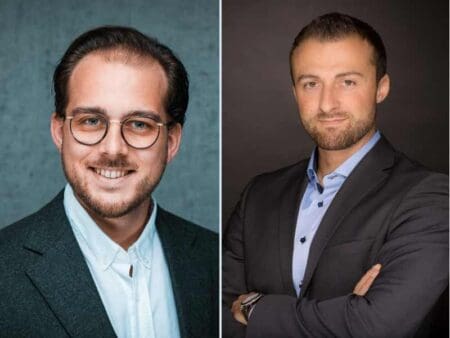
Siemens Energy has introduced the Cyber Lab, which is focused on developing innovative solutions to emerging market threats for internal users and others in partnership with universities and start-ups.
The digital world is bringing new, previously unthought-of advances to the daily life of businesses and individuals in general. This has created new opportunities for those with criminal or malicious intent, particularly in the power sector. As a critical infrastructure, assets are particularly vulnerable and have already seen a steady rise in the increase of cyber-attacks, reaching a record high in 2022 according to S&P Global’s Energy Security Sentinel.
Innovating cybersecurity practices
With the demand for increased proactive and innovative approaches to address the emerging threats, Siemens Energy’s Cyber Lab, now in its second year, comes in, to identify and develop solutions to enable customers and others to continue to remain cyber secure.
“The basic aim of the Cyber Lab is to revolutionise the cybersecurity landscape by developing innovative solutions to proactively address emerging cyber risks and threats internally and externally,” explains Patrick Popa, Innovation Manager for Cybersecurity at Siemens Energy, who is spearheading the Cyber Lab with fellow Innovation Manager, Florian Ammerl.
Ammerl adds: “Our goal is to create a cybersecurity innovation pipeline that helps our customers to safeguard their critical assets, their privacy, and their data. How we’re doing it is basically by identifying those risks and needs and setting up the path to conceptualise and build out the innovation opportunity.”
Ammerl is responsible for identifying and researching the market trends and opportunities – the “front end” of innovation as he describes it – while Popa is responsible for the “back end”, developing and validating the innovations in conjunction with selected partners such as start-ups.
Identifying innovation trends
The first question in the innovation process is what to innovate and where. For this, an organisation needs information first. “What are current challenges for our customers? What are our own challenges? Where does the market develop? We’re asking these questions to make sure that our innovation activities are based on data and evidence, not on a gut feeling,” says Ammerl.
He explains that three key measures are involved in screening, with one being a crawling mechanism to identify important information influencing innovation in Cyber. A second is the screening of the ideas and knowledge of employees. The third and what he describes as “probably the most important” is Siemens Energy’s customers. “There will be no innovation without a clear customer demand,” Ammerl emphasises.
Once identified, opportunities need to be analysed. “We need to ensure, that every opportunity is reviewed and checked for some key aspects like ‘strategic fit’, ‘potential return’ or ‘technical feasibility’. Interaction and alignment with other teams in Siemens Energy is key in making sure that an opportunity is worth pursuing,” says Ammerl.
Current Trends in the Cyber Industry
Siemens Energy is making sure that trends are also being screened, evaluated, and matched to challenges and needs, Ammerl says.
According to him, one major trend over the past years comes from a challenge most big industry companies face: How can we protect the Operational Technology (OT) in factories or power plants in a more and more digitalised world? “We’re seeing a rising number of academia or start-ups, which are trying to tackle this challenge. However, a one-size-fits-all solution has not been found yet, so it will remain a big topic,” Ammerl says.
Further, he states that large parts of an organisation’s resilience is based on a trained and well-educated workforce, “highlighting the continuous trend for raising employees’ cybersecurity awareness. Because “phishing emails are still the most prominent attack vector for hacking.”
The last and most prominent trend currently being assessed is the usage of artificial intelligence (AI) in tools like ChatGPT, and the issues and opportunities for Cybersecurity it carries. “Tools like this always come with data protection concerns. This is why we must make sure to provide a secure playground for employees to test its full potential,” Ammerl says.
You might be interested in:
How ‘defence in depth’ can repel energy sector cyberattacks
Acceleration of innovation opportunities
At the handover point between the front end and the back end of innovation, analysed innovation opportunities will be presented to the top management, enriched with data such as added value for either the customer or Siemens Energy, market potential or funding opportunities.
Once the innovation opportunity has been identified, Popa takes it over to conceptualise, test and assess the business model together with valuable partners from their innovation ecosystems.”
“We’re creating the concept and the business model for the respective innovation opportunity to identify the profitability of each pilot project. Hence, we are partnering with external partners to accelerate solving business and customer needs,” Popa explains.
Testing is another critical pillar of this acceleration phase. Popa says that potential solutions are being continuously tested to evaluate the feasibility of the concept.
“While one of the most important performance indicators from a cybersecurity perspective is obviously increasing security, there has to be an underlying profit by monetisation of pilot projects, reduction of costs, or an increase in efficiency,” Popa says.
Potential of partnerships
“It is not enough to identify trends, put it on some slides and then call it a day,” Ammerl says. Therefore, the Cyber Lab is engaging in a variety of partnerships to expand its knowledge.
Partnering up with academia is one way to enhance your capability of identifying the most valuable use cases for a specific trend. “We aim to have a close collaboration with researchers so we can work on projects together,” Ammerl comments. The Cyber Lab is engaging with two institutions currently, the Munich University of Applied Sciences in Germany and the Norwegian University of Science and Technology (NTNU) in Norway to identify potential use cases.
There are various other avenues to seek potential partners, Popa explains, among them governmental organisations, start-ups and established companies, depending on the target market. Cooperation projects with customers and start-ups as well as the Cybersecurity innovation hub in Israel are already in effect.
Start-ups, however, are of particular interest as the benefits lie not only in the acceleration of relevant innovations. They are also able to recognise specific movements outside of the ecosystem. “Where the money flows in terms of venture capital is also where the big trends are. We are seeing a lot of potential in start-ups globally, but it’s crucial to find the right start-ups that match the problems we are facing and that can help us to lead the way in cybersecurity.”
A start-up case study
As an example, Popa describes the Cyber Lab’s experience in Israel, where a solution has been co-developed and tested with the German start-up Riskbeam at a power plant of an Israeli customer.
“We have given the start-up solution basically for free to our customers to start a proof of concept with them and learn about the solution through our testing evaluation. A great combination – a win-win for everyone.”
The solution was focused on simulated cyber-attack scenarios to quantify and analyse the risks of a given solution, which in essence combines Operational Technology (OT) and Information Technology (IT) data with financial data to enable the calculation of risks on the customer side or a Siemens Energy factory.
“By running those kinds of simulations regularly together with the start-up, one can identify where your weak spots are and what you can improve on your overall risk posture. This enables a factory owner to allocate cybersecurity resources based on their risks.”
Open innovation
Finally, there is the potential for wider engagement and Ammerl says the Cyber Lab has adopted an open innovation approach based on knowledge exchange.
“We believe that opening the innovation process to other organisations allows innovation to thrive, the security of our products to get stronger, and overall energy security to increase,” he added.
That’s why Siemens Energy’s Cyber Lab is always looking for new partnerships to improve cybersecurity solutions. “We can’t do it alone – and neither can other companies. Recognising this fact and working collaboratively rather than in silos is the best way to protect our energy system. That’s why we welcome any company interested in innovating cybersecurity in exchange with us,” concludes Popa.
About Siemens Energy
Siemens Energy is one of the world’s leading energy technology companies, backed by comprehensive expertise and many years of experience. With over 93,000 employees worldwide, the company is dedicated to meeting the growing energy demand while ensuring our climate is protected. Through innovative technology and expert services, Siemens Energy is committed to making sustainable, reliable and affordable energy possible.








